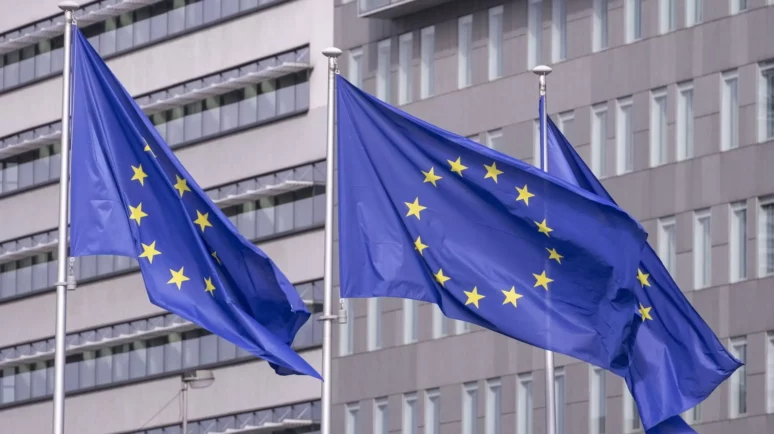OKX Delists Tether in EU As MiCA Looms, Will Other Exchanges Follow?

OKX has delisted USDT trading pairs ahead of the EU's MiCA crypto regulations. (Photo by Silas Stein/picture alliance via Getty Images)
- USDT is no longer available for trade across all pairs on OKX, though it is available via over-the-counter trading options.
- The EU’s stablecoin regulations should come into effect by 30 June 2024.
- EUR-denominated stablecoins are now a “focus” of OKX.
Crypto exchange OKX has taken decisive action to delist stablecoin Tether (USDT) ahead of the European Union’s impending stablecoin regulations. It is now opting to support only USD Coin (USDC) and Euro-based stablecoin pairs.
With the fourth-largest crypto exchange set to delist USDT from all crypto trading pairs, concerns over the impact on the crypto markets, and the potential for a domino effect, has many wondering if other exchanges will follow suit.
OKX to Delist Tether
In March 2024, EU users found out they could no longer trade USDT against other cryptos on OKX. They could, however, still deposit, withdraw, buy, sell, and convert it via over-the-counter (OTC) trading.
This move comes some months ahead of MiCA coming into force. When it does, however, stablecoin issuers will need to be registered as an Electronic Money Institution (EMI) within the European Economic Area (EEA). With regards to the decision, OKX wrote in a statement :
“This year our focus is to expand euro pair liquidity and become the preferred venue for euro to crypto spot trading. We evaluated this decision and delisting the current USDT pairs only impacts a small subset of our user base.”
Though Tether hasn’t provided any publicly available details as to the exact reasons behind the move. It is, however, likely because of the fact that MiCA’s new rules pose huge compliance challenges for Tether and stablecoins in general. USDT is the most significantly one for crypto exchanges that list USDT trading pairs, because it is the single largest stablecoin issuer.
It was only recently that Tether began changing its compliance process. It started to set up partnerships with EU regulatory entities and third-party audit firms to provide proof and composition of its reserves.
The MiCA Era
The EU’s sweeping and comprehensive new regulations for crypto are expected to come into force as early as 30 June, 2024. They will instantly change stablecoin regulations across all 27 EU member states.
One portion of MiCA, which is perhaps the largest, is the stablecoin-related rules that separate them into two different definitions. First, there are asset-referenced tokens (ARTs). These can include absolutely anything, such as a basket of currencies, though they cannot reference just one fiat currency.
Secondly, there are e-money tokens (EMTs). These are tokens that can reference a single fiat currency, although they have significantly stricter issuer licensing and foreign currency controls. As per MiCA, only Electronic Money Institutions (EMIs) and credit institutions licensed to operate in the EU can issue fiat-backed stablecoins.
Though it remains yet to be seen if Tether will apply for an EMI license, it is fair to say it would be odd for the world’s largest stablecoin provider to simply leave one of the busiest crypto trading regions on Earth.
A Domino Effect?
Oddly, OKX remains the only major exchange to have removed USDT pairs in Europe. This may have just been a pre-emptive strike from OKX before MiCA stablecoin regulations came into place this year.
It’s worth noting that you can still use USDT on OKX, it is just limited in functionality. Secondly, there is a likelihood that this is a matter of both exchange and stablecoin issuers stepping back for a moment while Tether toils away in the background, looking for a way to continue serving OKX, or Europe, in line with MiCA.
That said, OKX’s decision to halt USDT trading pairs certainly highlights the regulatory challenges that exchanges face. With MiCA soon coming into effect, it is only logical to begin placing focus on EUR-based/denominated stablecoins.
Will other exchanges follow suit? Probably not anytime soon as the market impact could be horrendous. OKX’s decision could serve as a shining example of prudency ahead of MiCA as Tether tries, or not, to maintain a foothold in Europe.


